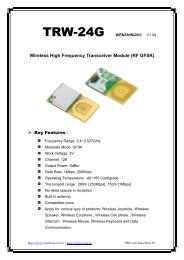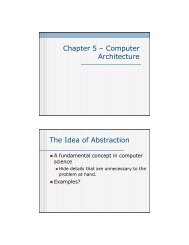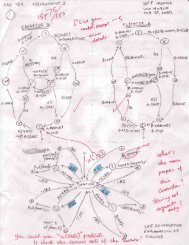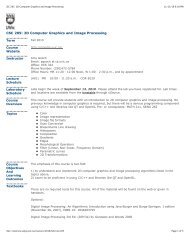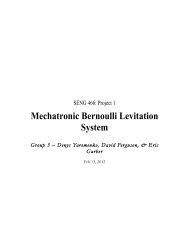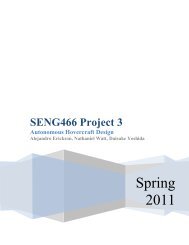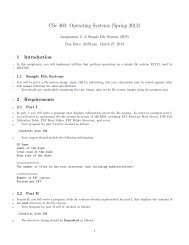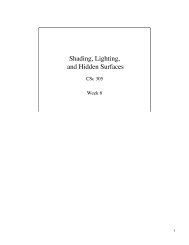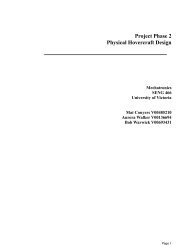Icon - Department of Computer Science - University of Victoria
Icon - Department of Computer Science - University of Victoria
Icon - Department of Computer Science - University of Victoria
You also want an ePaper? Increase the reach of your titles
YUMPU automatically turns print PDFs into web optimized ePapers that Google loves.
y the field value and then summed. The final result is divided by the sum <strong>of</strong> the<br />
field values, sum. The case where q is outside D (Figure 5.10) must also be handled.<br />
There D(q) cannot be calculated as sum = 0, so 0 is returned as the field value.<br />
Hence, the approximated scalar field fA ′ at q is defined as:<br />
fA ′(q) =<br />
<br />
D(q) = −<br />
sum =<br />
fA(q + D(q)) sum > 0<br />
0 sum = 0<br />
m<br />
i=1<br />
i=1<br />
q−vi<br />
g( ) · Tvi<br />
R<br />
sum<br />
44<br />
(5.6)<br />
(5.7)<br />
m q − vi<br />
g( ) (5.8)<br />
R<br />
where fA is the scalar field before deformation and m is the number <strong>of</strong> grid vertices<br />
which influence q. Here again g(x) is used as a smooth blending function. Since<br />
fA ′(q) is 0 outside the voxel grid, the field has discontinuity (Figure 5.11b), however<br />
as the iso-surface lies inside the voxels, this is acceptable. This technique produces<br />
a real-time interactive approximation to the final deformation, which is described in<br />
the next section.<br />
Figure 5.10: The field value <strong>of</strong> q1 is calculated with the Wyvill function. Nevertheless,<br />
the field value <strong>of</strong> q2 cannot be calculated because no vertex influences q2. In this case,<br />
the system simply returns 0 as the field value <strong>of</strong> q2.




